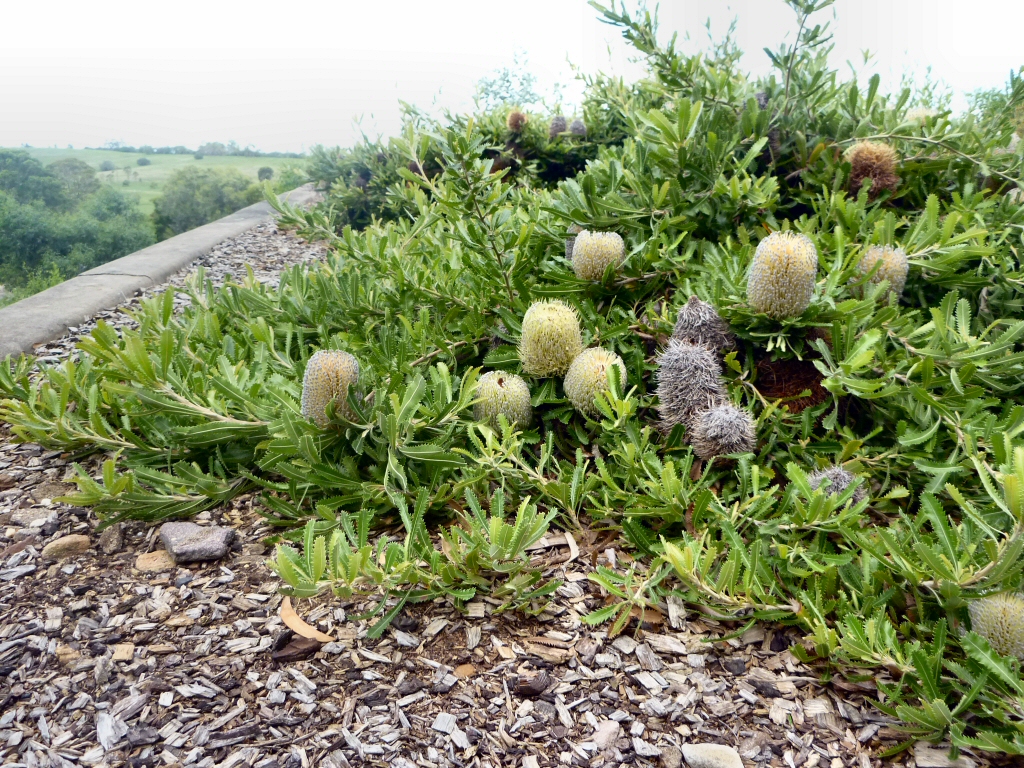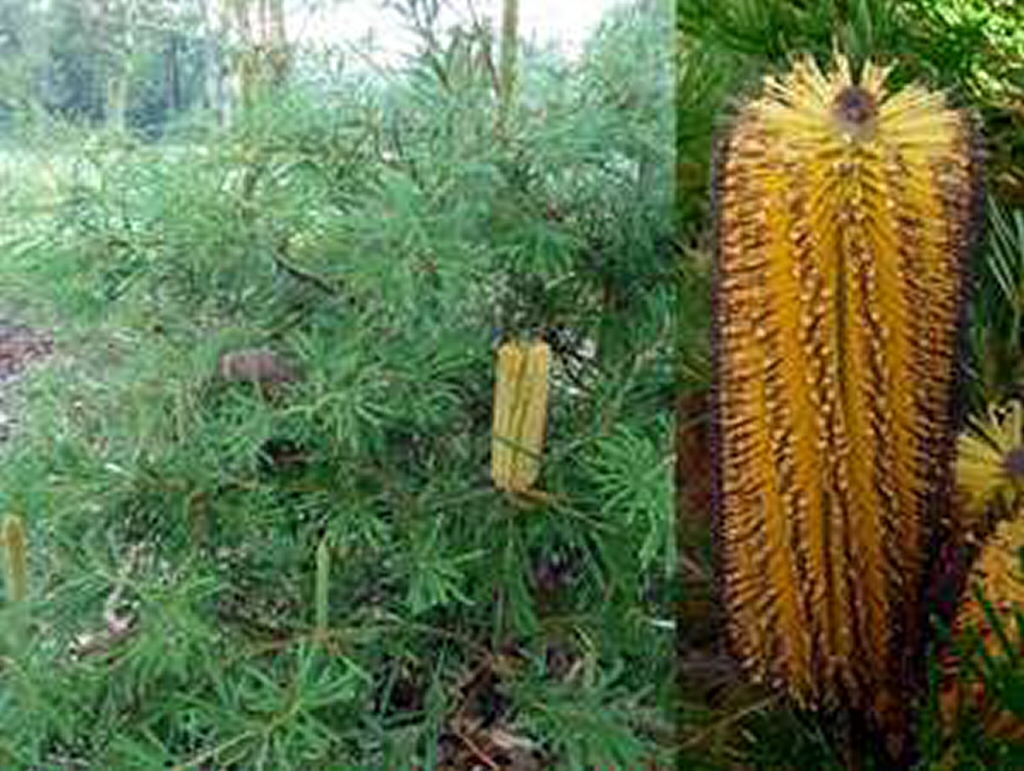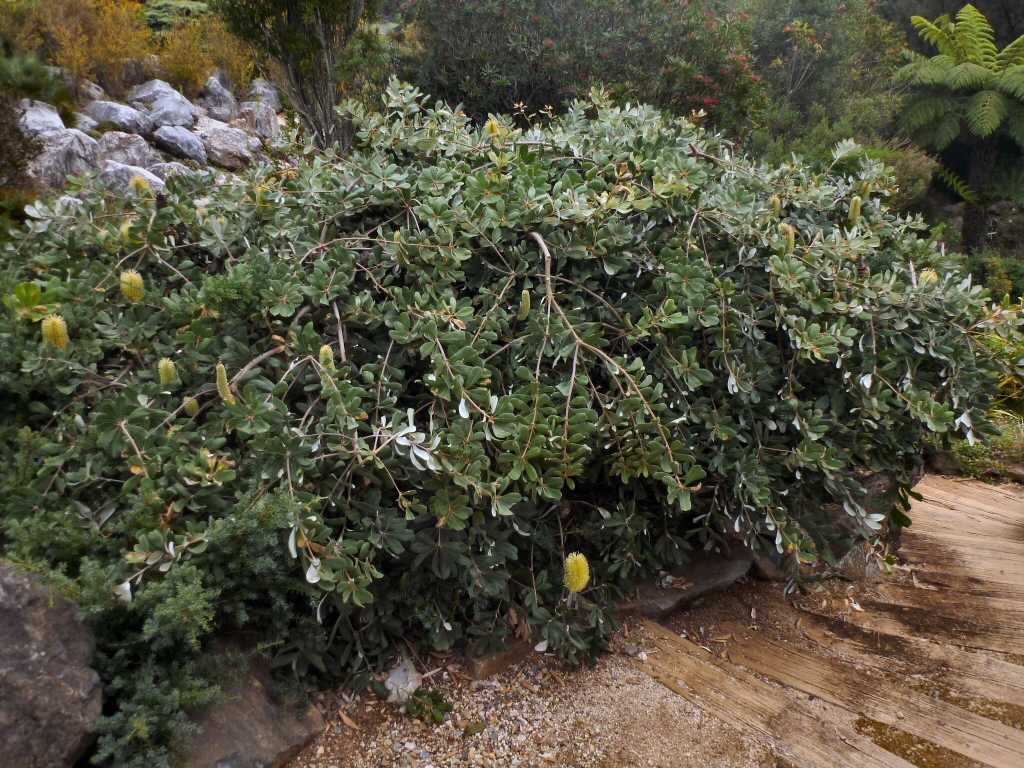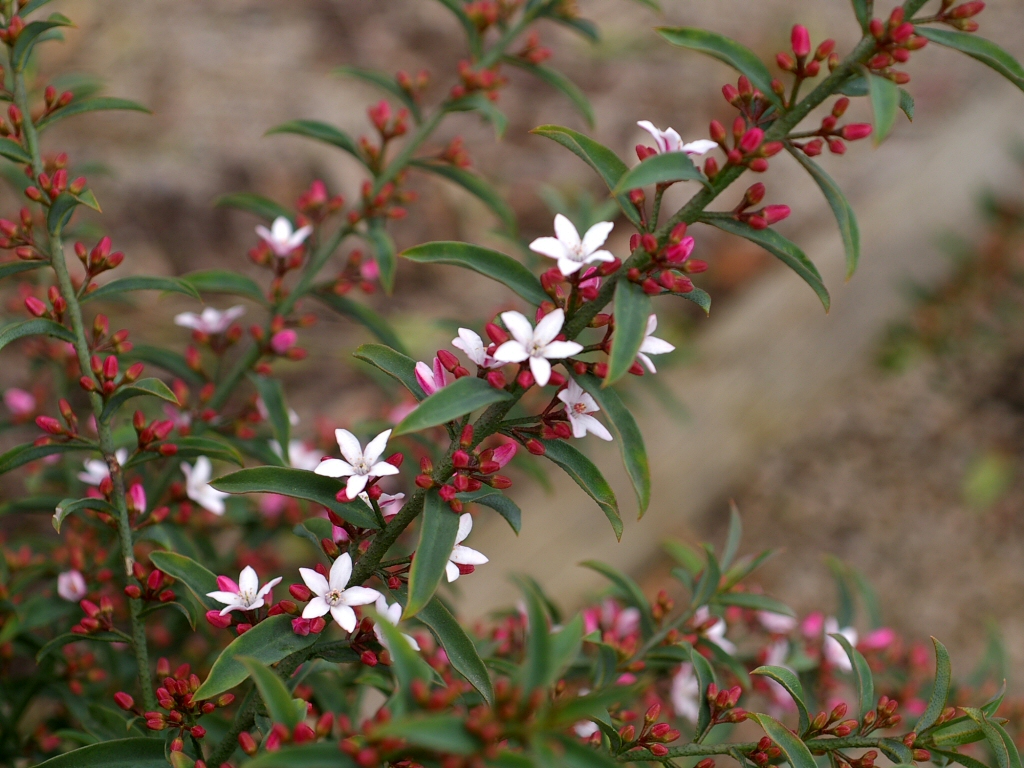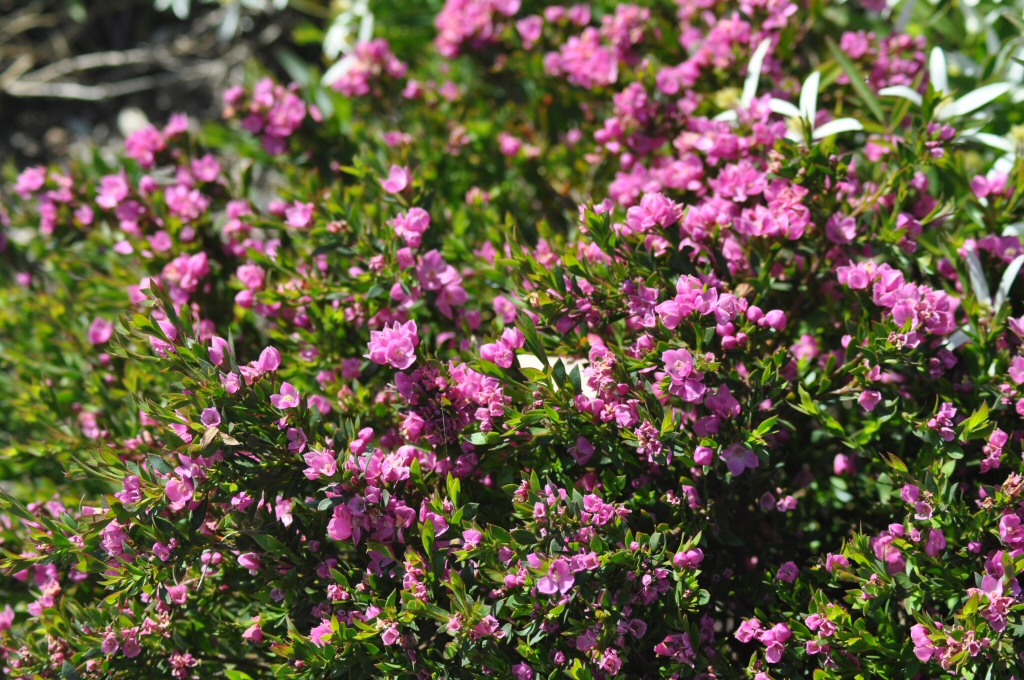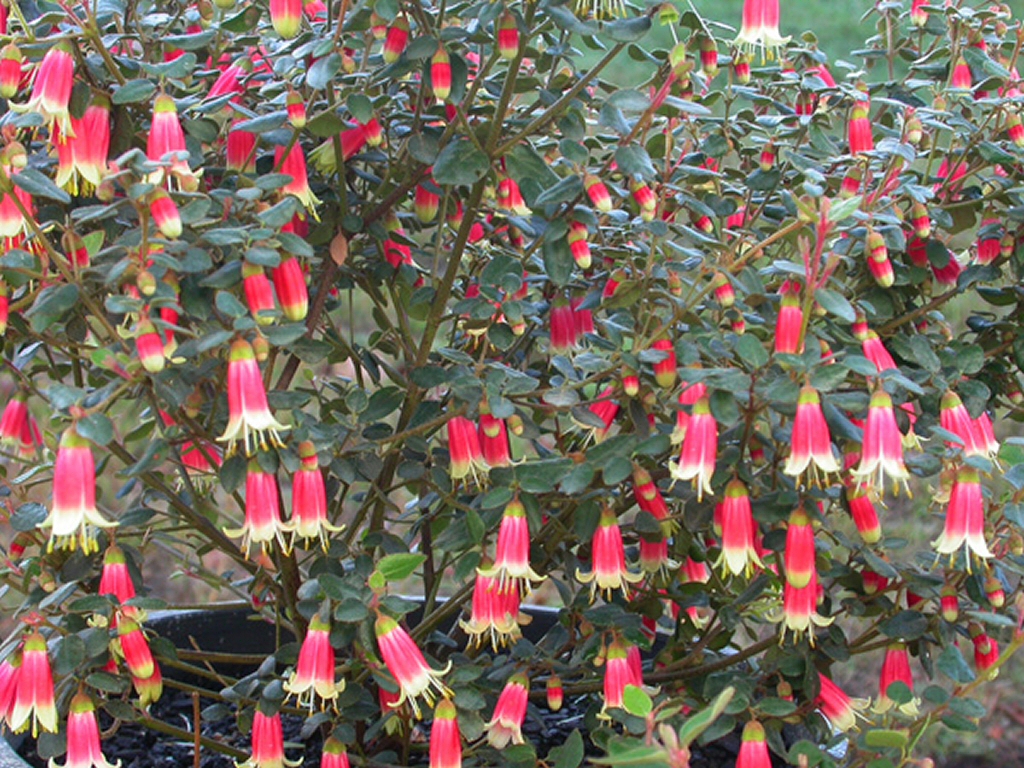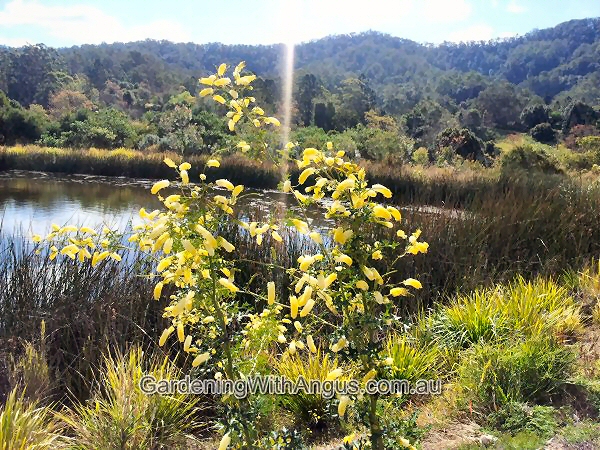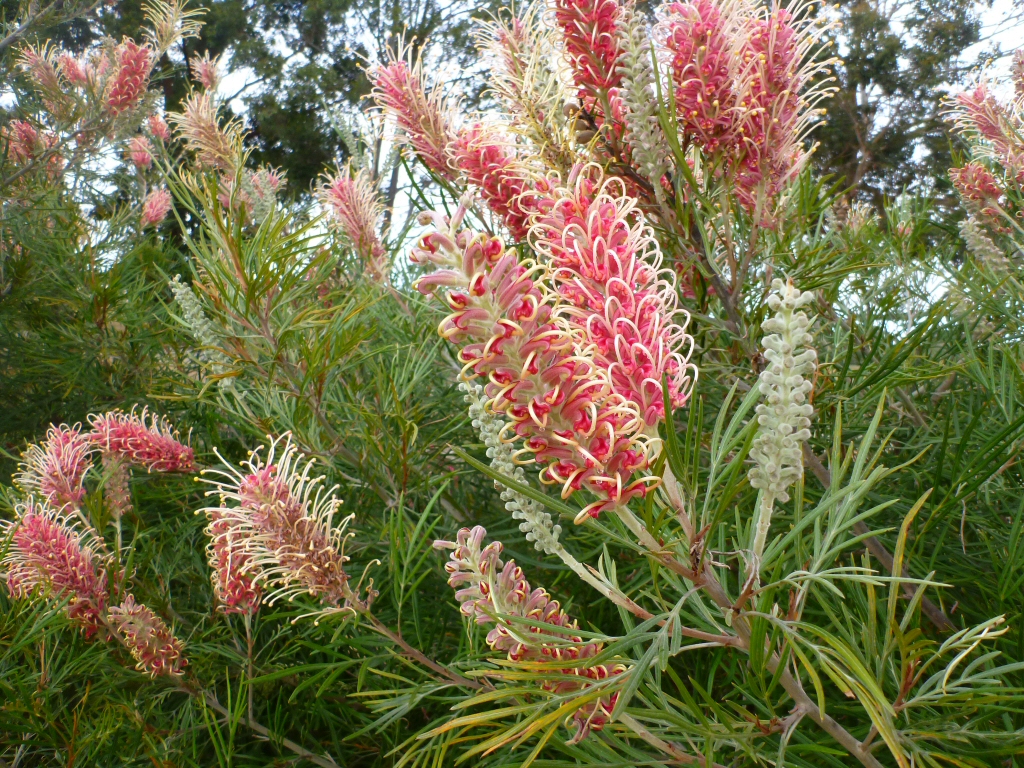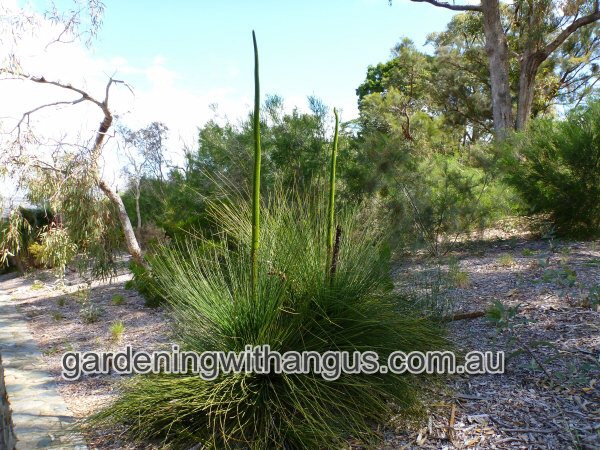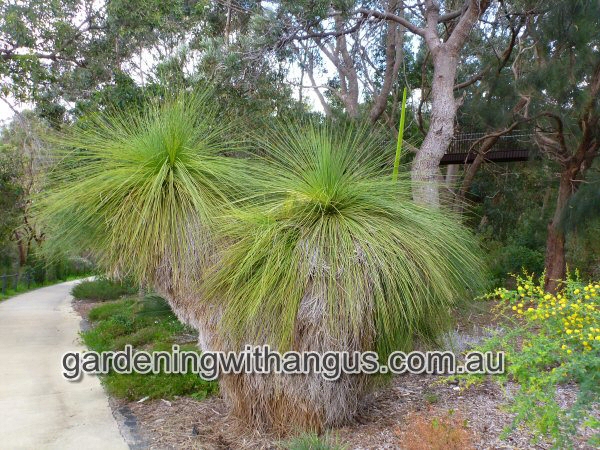What are the best Australian Native Shrubs for the Garden?
Shrubs form a huge group within the Australian flora and can be defined as woody plants that remain relatively low (say less than 5m) and generally have multiple stems or trunks. This type of plant abounds in more exposed, harsher climatic areas such as coastal and alpine areas but can also be readily found in the drier forests around Australia.
Shrubs with tough water-saving leathery or needle-like foliage are found in abundance in the dry eucalypt forests throughout all states of Australia. A couple of major plant families dominate our flora. The family Proteaceae, named for the Greek god Proteus that could change his form at will, typifies this group with members as diverse as grevilleas, hakeas, waratahs and banksias. The gum tree family Myrtaceae is also a major contributor to our shrubby flora with the various shrubby, flowering mallee eucalypts, bottlebrushes (Callistemon), honey myrtles (Melaleuca), tea trees (Leptospermum) and Geraldton wax (Chamelaucium) and many other beautiful members.
-
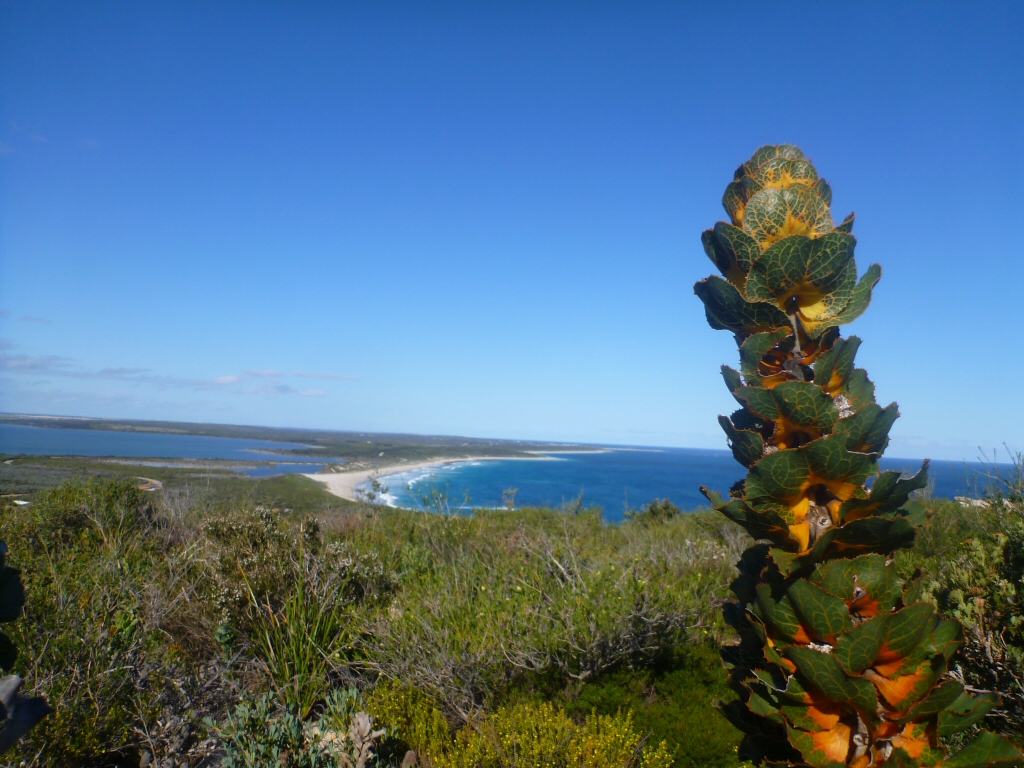
Hakea victoria - Royal hakea
-

Telopea mongaensis-x-speciosissima 'Corroboree'
-
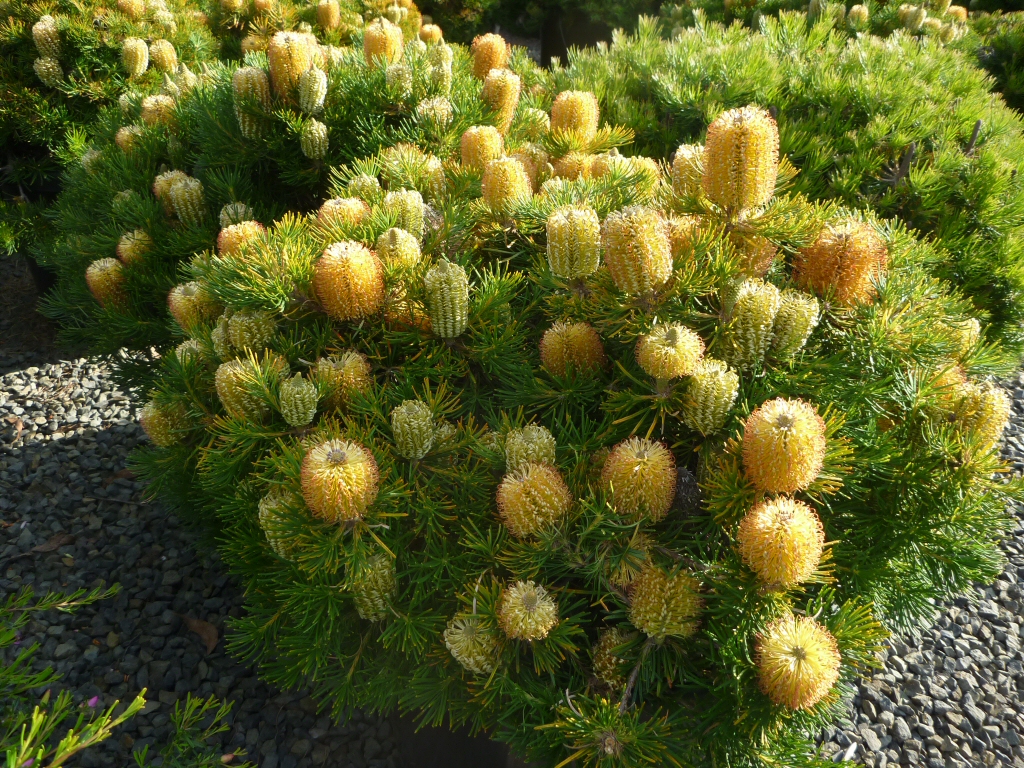
Banksia spinulosa 'Birthday Candles'
The moist forests of eastern Australia also provide some fantastic shrubs for the garden. Habitats such as rainforests have encouraged the evolution of plants with large, shiny leathery leaves, often accompanied by showy flowers to attract suitable pollinators. Such species belong to a diverse array of families, including the deservedly popular Syzygiums and Acmenas.
Gardeners guide to Australian Native shrubs
Wattles are familiar to all for their delicate yellow blossoms and it is possible to find a wattle species flowering in any given month of the year. With hundreds of species it is possible to find a suitable one for your climate and conditions without too much trouble. Many species also add interest to the garden through their beautiful foliage with the knife blade acacia (Acacia cultriformis) being a classic example.
The many shrubby species of banksia are perfect for those who wish to create a bird-attracting garden as they not only provide nectar but also the dense growth can offer nesting opportunities. Of particular note is the heath-leafed banksia (Banksia ericifolia) and its spectacular large-flowered hybrid Banksia ‘Giant Candles’. Also worthy of consideration is a host of new low growing banksia cultivars such as Banksia integrifolia ‘Roller Coaster’, B. spinulosa ‘Honey Pots’ and B. serrata ‘Pygmy Possum’ that are perfect for pot culture and small garden spaces.
Australia has some delightful members of the Citrus family, Rutaceae, with the best known including the boronias, native fuchsias (Correa species and hybrids), croweas (Crowea species and cultivars), wax flowers (Eriostemon and Philotheca). The delicate starry flowers of this group come in a range of pinks and whites and reds. Growing these plants in large pots can help prolong their life considerably.
The bottlebrushes (Callistemon species and cultivars) must rank amongst the showiest of Australian shrubs when in flower with their distinctive fluffy flowers in shades of red, purple, pink yellow and white. An added bonus is their ability to tolerate poorly drained soils, as well as being great for attracting birds. There are dozens of species, most of which have been grown in cultivation, leading to the selection of many superior forms that have become cultivars with some of the outstanding ones that have stood the test of time including ‘Candy Pink’, ‘Kings Park Special’, ‘Little John’, ‘Hannah Ray’, ‘Perth Pink’, ‘All Aglow’ and ‘Prolific‘. There are some stunning new cultivars that have been introduced in the last few years which will be worth trying.
Grevilleas are arguably Australia’s best shrubby plants for the garden. The variation in colour, size and shape is quite amazing with a number of grevilleas having the capacity to flower all year round in frost free climates. Grevillea ‘Robyn Gordon’ is perhaps the best known of all with big red brushes of flowers but there are many other outstanding ever-bloomers such as ‘Superb’, ‘Moonlight’ and ‘Sylvia’. Fantastic ground covers also feature in this genus with ‘Poorinda Royal Mantle’ and ‘Bronze Rambler’ standing out. There are also many types that are good for cool climates such as ‘Canberra Gem’ and G. rosmarinifolia. It is impossible to briefly describe the full potential of this remarkable genus, and it is well worthwhile exploring the many species listed in my plant database, taking care to try and match their climatic requirements to that of your garden.
The tea trees (Leptospermum species and cultivars) feature star-like flowers, often in great profusion and sometimes accompanied by aromatic foliage. Tea trees will often tolerate poorly drained soils, making them a useful addition to the garden palette. Of similar appearance, Geraldton wax (Chamelaucium uncinatum) is one of the classic flowering Australian shrubs, having become popular around the world for its soft petalled star-like flowers and freshly aromatic foliage. It is ideal floral filler for arrangements and grows easily in areas with dry summers and reasonably well-drained soils.
-
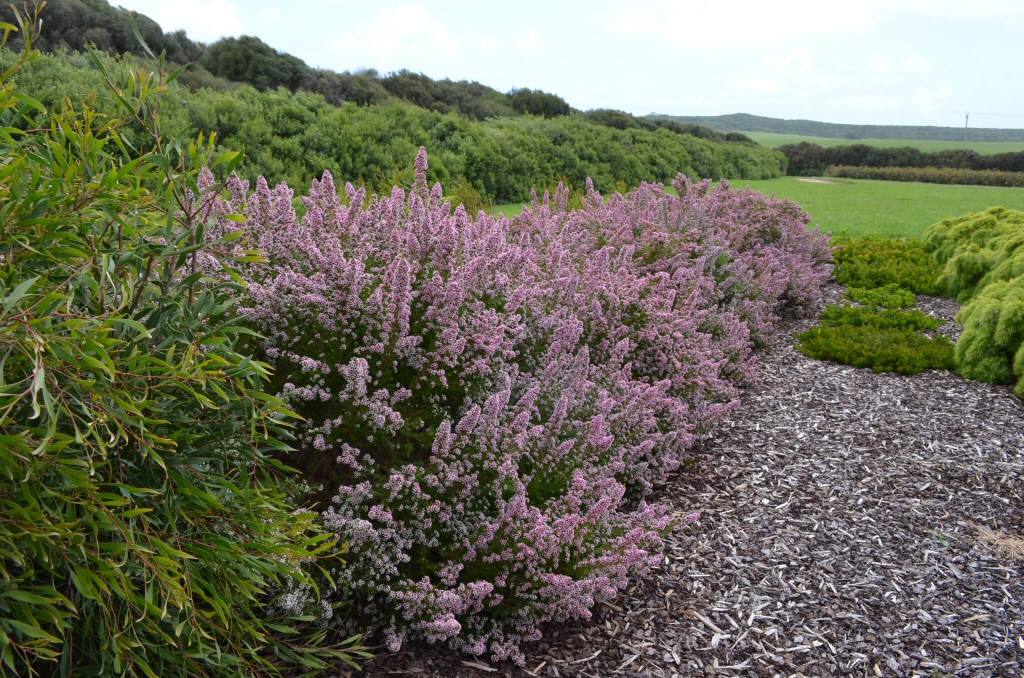
Chamelaucium uncinatum 'Sweet Rosie'
-
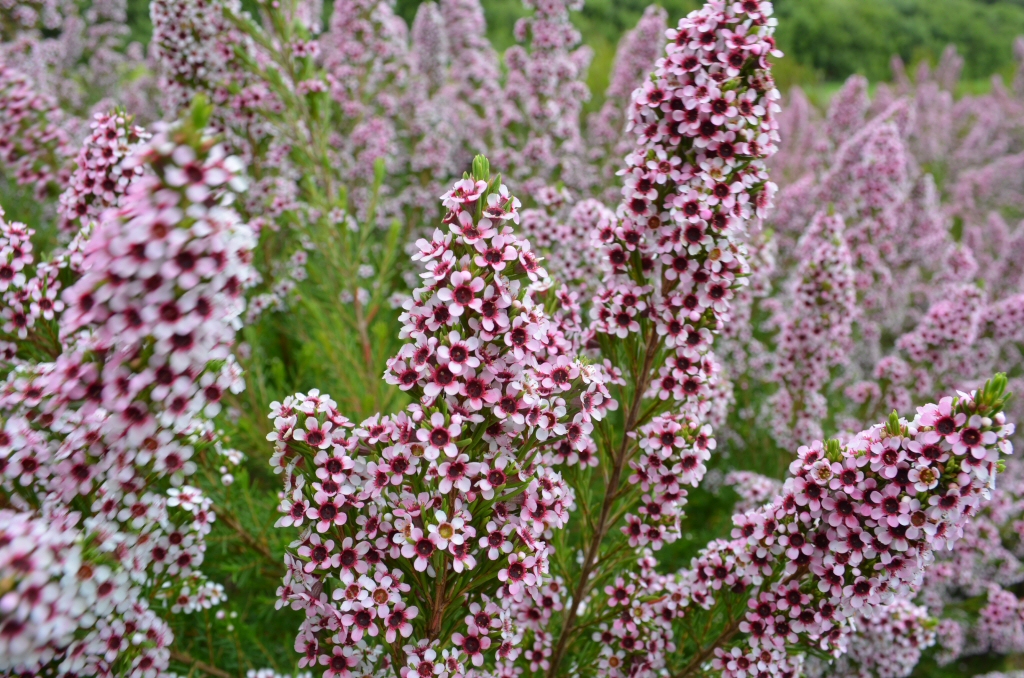
Chamelaucium uncinatum 'Sweet Rosie'
-
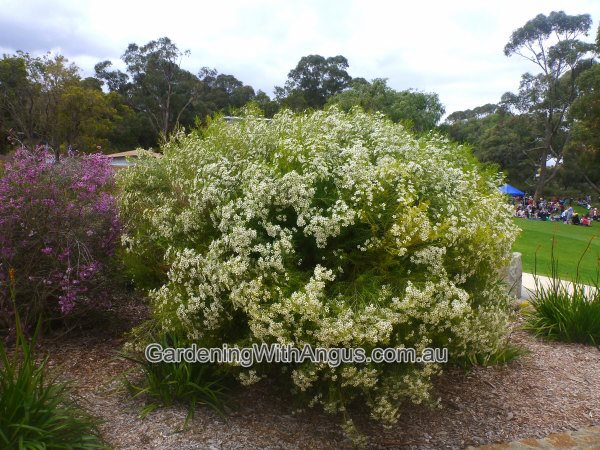
Chamelaucium uncinatum - geraldton wax
The honey myrtles (Melaleuca species and cultivars) are one of the most useful groups of plants for planting in poorly drained areas. An extensive array of species from both sides of the continent feature showy bottlebrush flowers. These are often accompanied by perfumed and interestingly coloured and textured foliage.
The mint bushes (Prostanthera species) are one of the more delicate flowering shrubs in the Australian flora with soft purple and pink flowers complemented by lovely minty fragrance in their foliage. They are also extremely useful plants for shady areas as this is where they thrive in their natural environment.
-
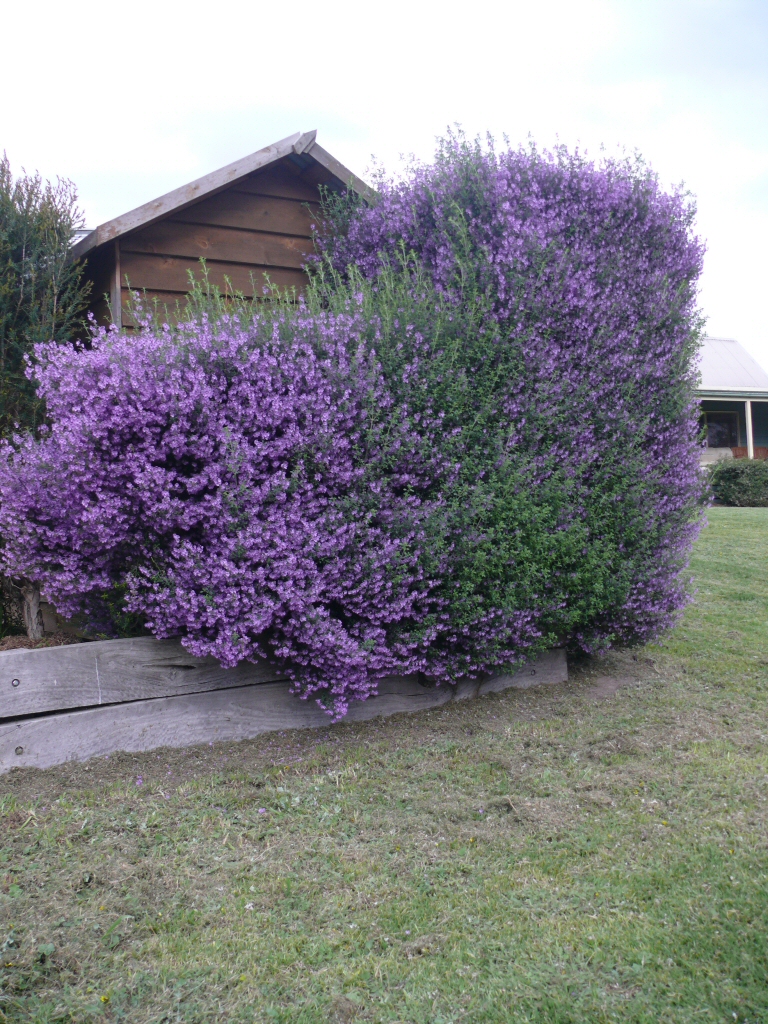
Prostanthera sieberi 'Minty'
-
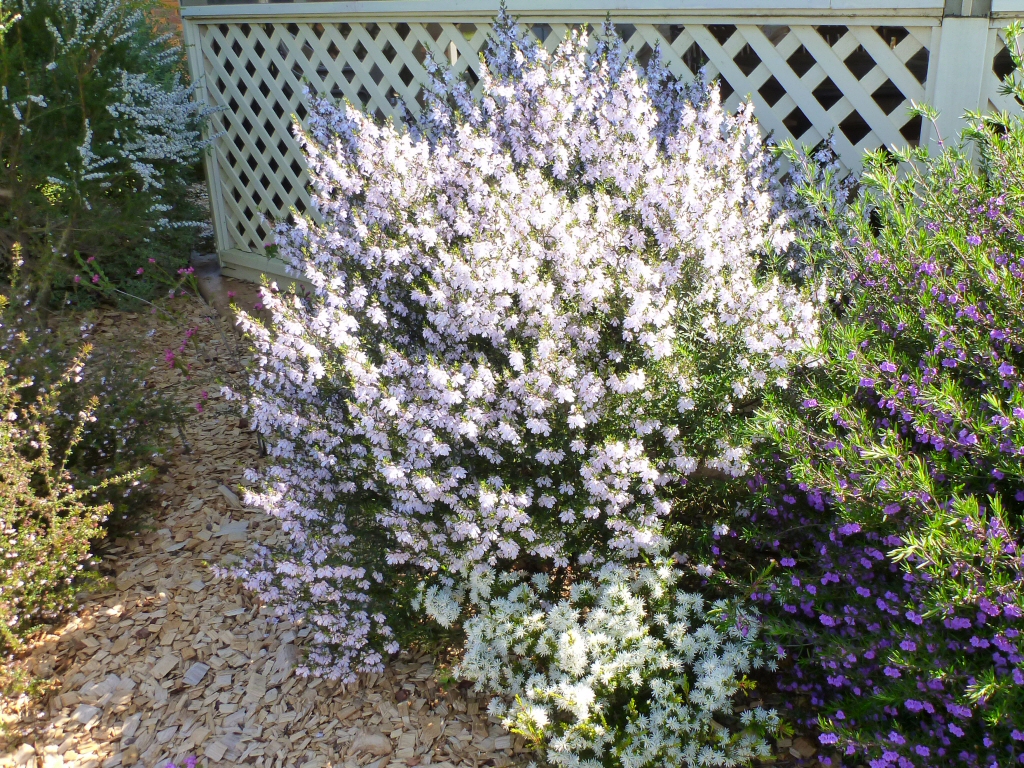
Prostanthera-x-lasianthus 'Poorinda Ballerina'
-
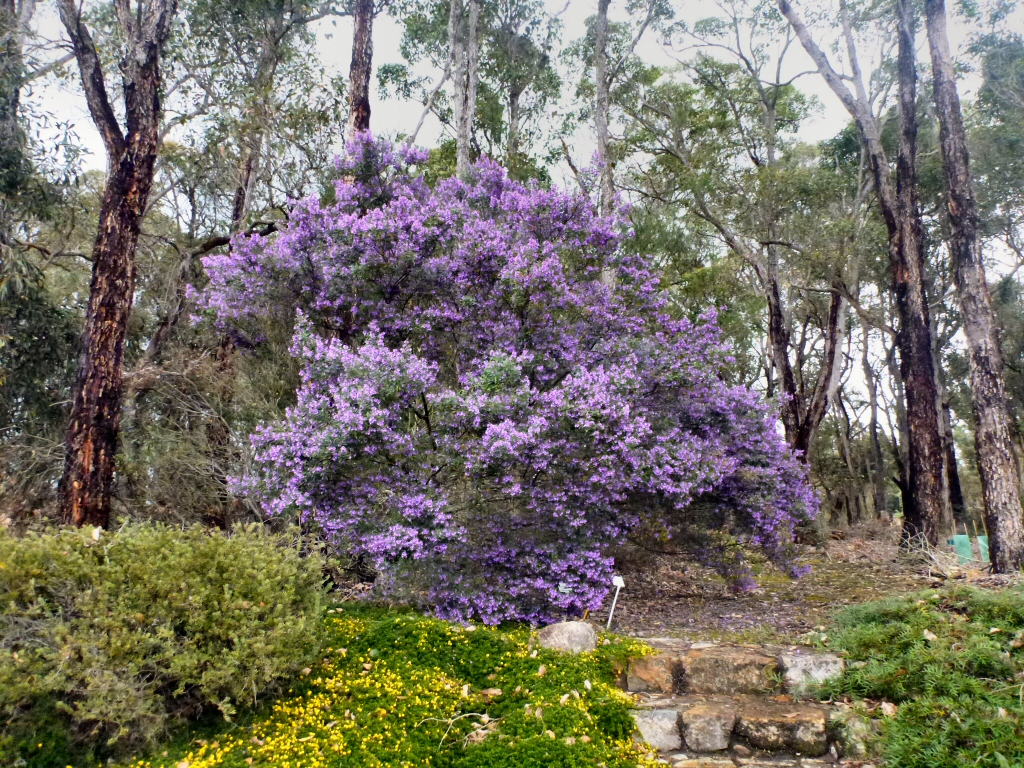
Prostanthera ovalifolia - mint bush
The waratahs (Telopea species) are a wonderful, yet frustrating group to grow with their fiery red blooms and dramatic, leathery mid-green foliage. They are rather susceptible to root-rotting fungi such as Phytophthora, which makes it imperative that they are planted in a very well drained soil or large container with a free-draining potting mix. The NSW waratah (T. speciosissima) is the most spectacular of the species but probably also the most cantankerous to grow. Its hybrids such as ‘Braidwood Brilliant’ and ‘Shady Lady’ have proven to be better performers in the garden.
-

Telopea speciosissima x monganensis 'Braidwood Brilliant'
-
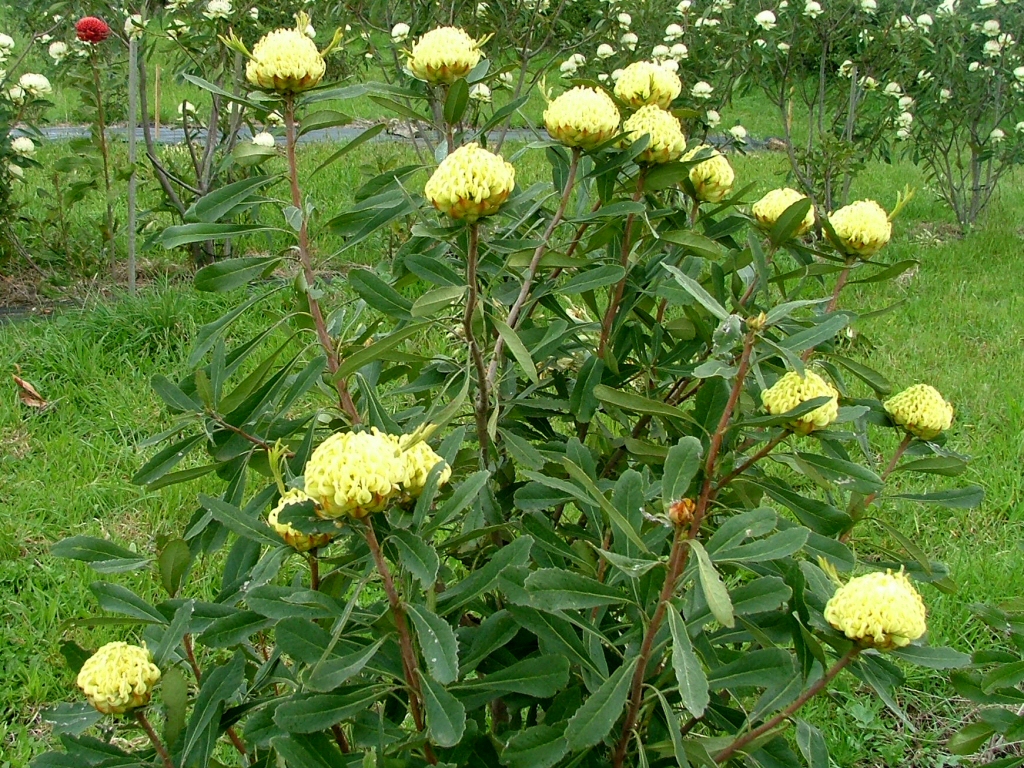
Telopea speciosissima-x-truncata-x-oreades 'Golden Globe'
-
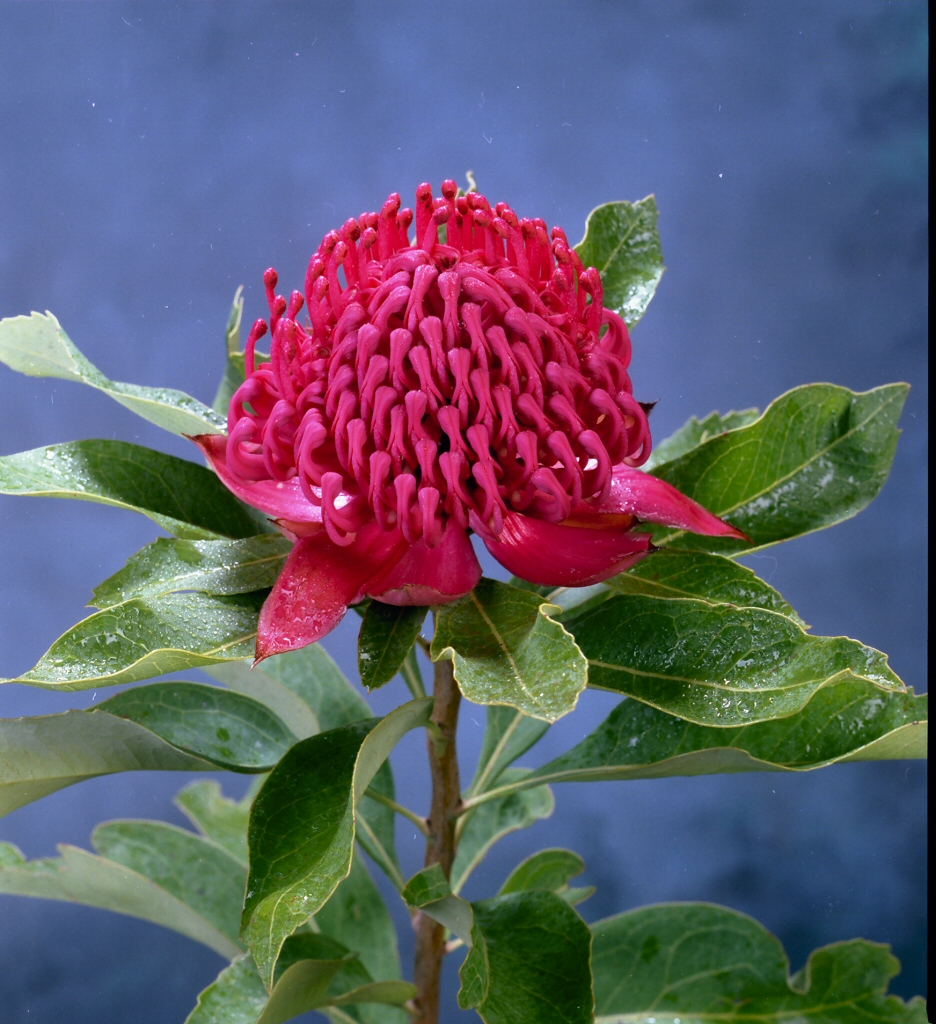
Telopea speciosissima x oreades 'Shady Lady Red'
The grass trees (Xanthorrhoea species) are one of the true signature plants of the Australian bush and, given the right conditions, can thrive under garden conditions. They require good drainage and prefer a sandy soil and low phosphorus levels so use only fertilisers designed for native plants.
We have touched on but a few of the important shrubby groups in this article. There are many others worthy of exploration for your garden but take care to try and match their climatic and soil requirements with your own. If you go to my plant search page, you can put in as many or few search terms as you want to find the shrub to suit your garden needs.

